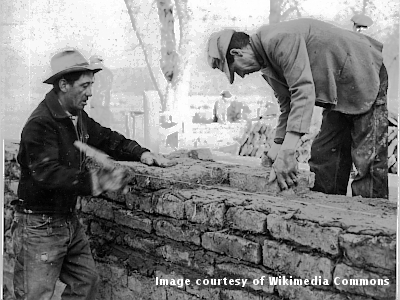Building a good working relationship - top tips
Building a good working relationship - top tips
Posted by s.crouch on 3 July 2013 - 11:38am
 By Steve Crouch and Neil Chue Hong.
By Steve Crouch and Neil Chue Hong.
You have the opportunity to embark on an exciting new collaboration with another project. You can see it has great potential to deliver something great - the sky's the limit! But what should you do, and look for in your collaborators, to ensure you establish a solid foundation for the relationship before you pour effort into a workplan?
1. Get clear commitment from everyone
It's vitally important to get commitment from everyone and at all levels, for example, from the Principal Investigator, managers, developers and researchers.
Otherwise, you may end up with solid technical work that has been signed off by managers, developers and researchers, that ends up being stalled in deployment due to a Principal Investigator's priorities. Alternatively, and despite high interest on the part of the Principal Investigator, if those producing the technical work are heavily committed across many other projects, you may find their technical outputs suffer as a result.
2. Look for enthusiasm
Genuine enthusiasm or excitement is an obvious sign that your collaborators are invested in the project and want it to succeed. Positivity is clearly a good thing within a project and should not be underestimated. It creates a fertile ground for ideas, outputs and communication between those involved. After all, you're exploring this collaboration because you want to work well together and produce good results!
If collaborators are willing to shout about your collaboration at the conferences they attend, or in blog posts or other articles, it shows they believe in the work and are invested in the success of the project.
3. Establish good lines of communication
Getting information from collaborators in a timely fashion is a good indicator of their interest in the project. This could be in response to your queries, or queries of their own.
There should be willingness to establish clear lines of communication between all parties in the collaboration. Everyone should be aware of who has responsibility for each of the different aspects of the project. This increases efficiency of communication and helps save time and misunderstandings.
4. Meet face-to-face
A face-to-face meeting establishes trust, and is a good indicator of the commitment to work (the more people who are willing to travel to at a face-to-face, the better). Face-to-face meetings should be open to everyone: not just management, but technical personnel too.
5. Manage expectations
Expectation management is difficult. It's important to make sure you're not overpromising, particularly to your end users. Preparation is key. You must investigate the feasibility of the collaboration and be realistic about what is achievable, and what is out of scope.
6. Technical preparation
When working with a collaborator's software, it's important to have some technical familiarity with the software very early on (before the first meeting). This could just involve a brief examination of the codebase, its architecture and overall documentation.
Familiarity with the software reduces the risk of misunderstandings and over-promising of technical objectives, can help discussions on a workplan to progress more quickly, and helps to build technical trust early on. It can also help uncover opportunities or approaches that weren't previously considered.
7. Establish shared goals (and shared risks)
It's very important to identify goals that all partners in a collaboration consider a mark of success. The reasons for completing such goals may differ between partners, but it's clearly important that partners have a vested interest in completing them.
Of course, it's not just about identifying the mutually good stuff. It's also important to identify the risks within a collaboration and share them. If the consequences of a risk are appropriately shared and accepted across all partners, it establishes trust and demonstrates commitment - to take the rough with the smooth - from all sides.
8. Consider quick wins first
One way to significantly reduce risk within a large collaboration is to embark on smaller shared goals first. By initially identifying and completing quick wins, you establish success early and build confidence across both teams in the collaboration. It's much easier to manage and deliver smaller goals at first, working out any issues with the communication and management aspects whilst the risk is low.
With success already achieved, you can plan and undertake the more ambitious and fruitful goals, having established a firm foundation for the great work ahead!


